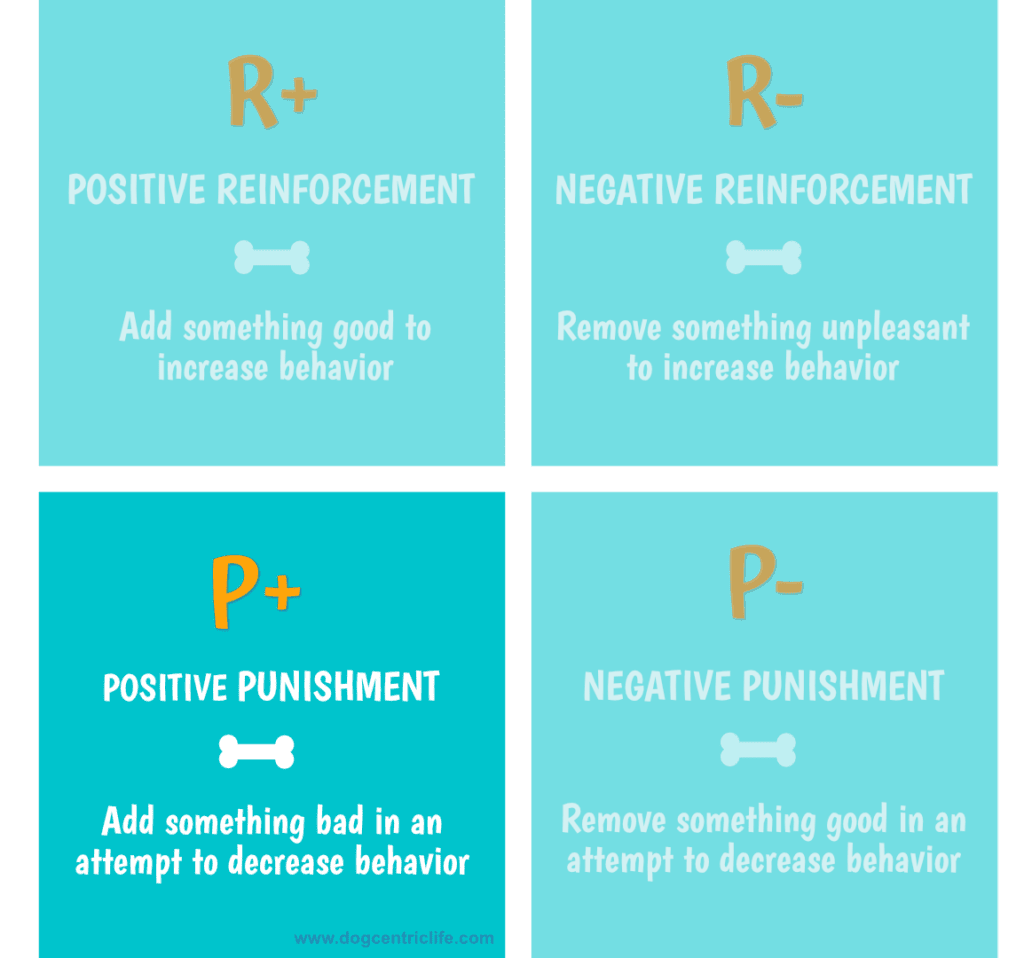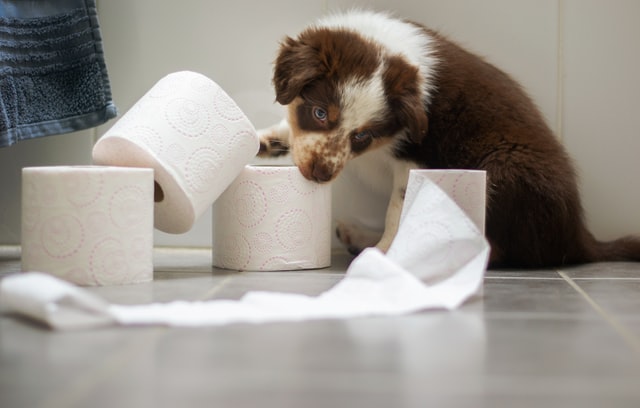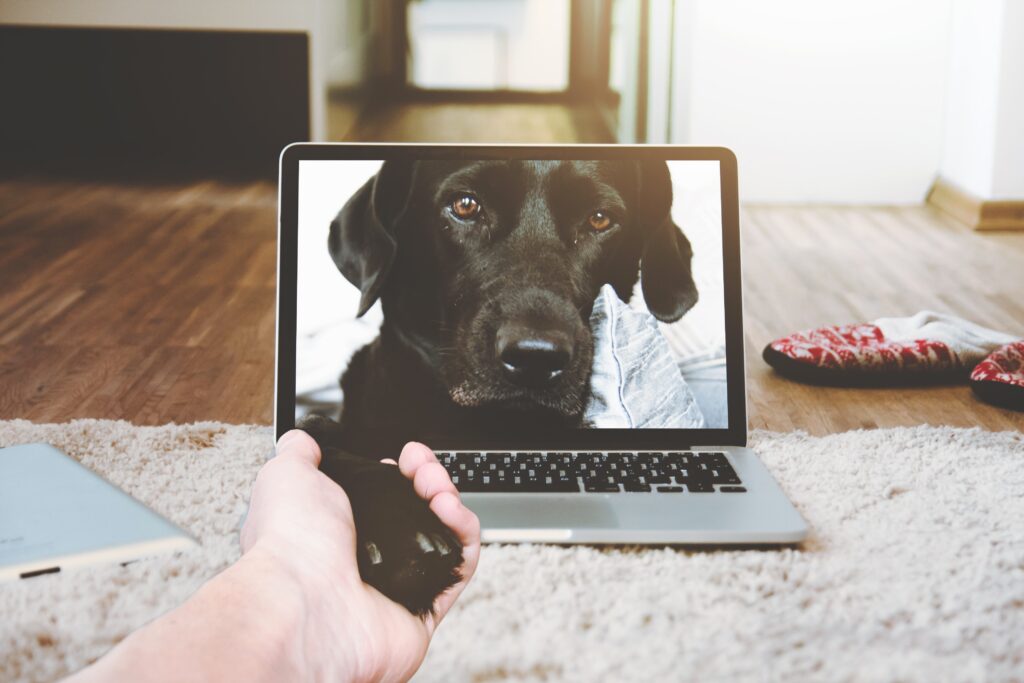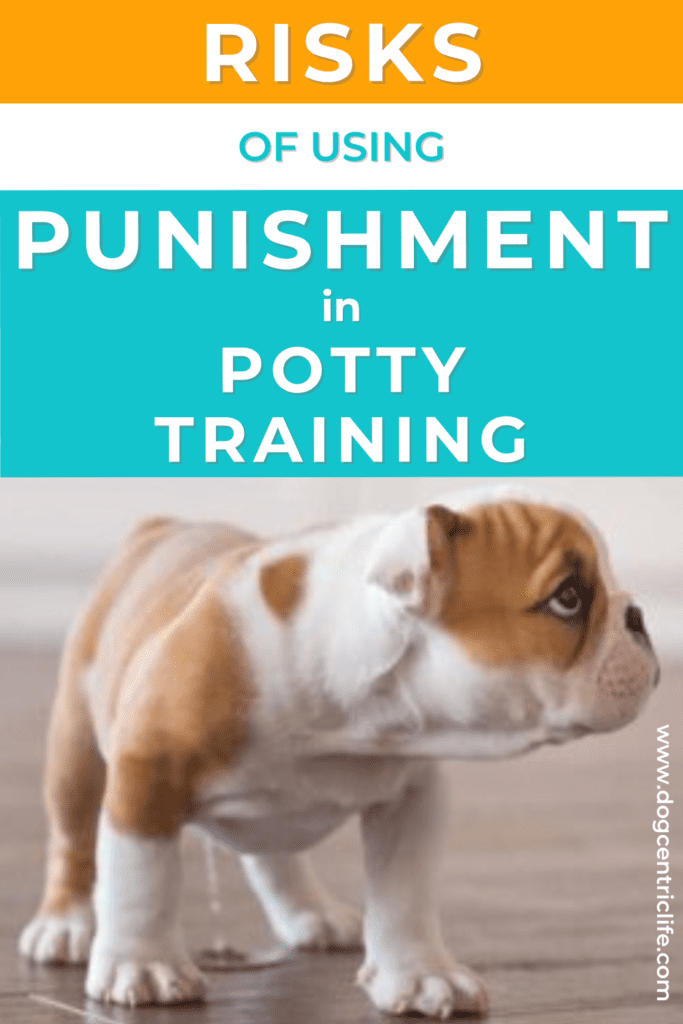You come home from running errands to find your puppy had an accident and left you with a big puddle of pee to clean up. OOPS! As a puppy guardian… how would you deal with this scenario? When it comes to puppy potty training should you punish your puppy? Should you rub their nose in the urine? Or swat their nose with a newspaper? Do these things work? Well, I could answer that with a simple yes or no right now… or I can help you to understand why these methods are… or aren’t… recommended.
There’s So Much Conflicting Information!
The truth is, there’s a lot of conflicting information out there when it comes to dog training. The hardest part is this confusion can come directly from those you think you should be able to rely on such as dog trainers, veterinarians, other dog professionals. Then there are those that just think they know best. I get it… it can be really confusing trying to decide… and decipher… what is the best option for you and your dog.
My goal is to help you understand, and wade through, the basics of the behavioral science that modern dog training is based on. As well, sharing information regarding using aversive training practices (i.e. punishment) as they come with a lot of unintended risks…. and it is important to understand what those are. Only then will you be able to decide what is best of you and your dog.
To begin, I believe in force-free, positive training methods as they have been proven to be the most effective way for dogs to learn. Previously, I used more aversive methods when training my dogs because that was what I knew. But that is what we all knew and practiced. And yes, sometimes I experience a little guilt when I think back about my dogs that are no longer with me and how I should have done better by them. But, today I know differently… and with that… I do differently.
What Is Considered “Aversive”?
If you’re unsure what the term “aversive” refers to… it’s using a training tool or technique with your dog which causes pain, fear or intimidation… all in an attempt to deter unwanted behavior(s). Some common examples of aversive tools and techniques include:
- prong collars
- choke collars
- shock collars/e-collars
- any dominance-based training methodology where you’re told to be the “alpha”
- using physical force and manipulation
- and yes, even yelling at your dog
Aversives are actually subjective… meaning what is considered aversive to one dog may not be to another. In saying that, in order to determine how it affects your dog you first need to use the tool or technique and, after reading this, you will hopefully see that it’s just not worth the risk.
AVERSIVE = “POSITIVE PUNISHMENT”
Aversive measures are considered a form of punishment… and more specifically in dog training it falls under the category of positive punishment. In positive punishment you introduce something negative, or bad, (i.e. rubbing their nose in their urine) – from your dog’s perspective – in an attempt to prevent the behavior (i.e. peeing on the floor) from happening. Again, remember, this is from your dog’s perspective… not necessarily yours. One dog may find yelling aversive, and another may not.

But as I mentioned earlier, there are risks that come from using aversive measures in dog training. Let’s discuss some of the reasons why you shouldn’t use aversive tools and techniques in training your dog.
Why Aversives are not recommended
Let me start by saying that aversives… or positive punishment MAY work for your dog… but these measures aren’t necessary. Aversives are often bordering on inhumane and there’s often a better way to do things. At the very least, aversives are unpleasant for your dog… but they’re unpleasant for anyone! If you had a friend that punched you in the face every time you’re out for a walk when you got farther than 12 inches away from them, I imagine you’d think of that as unpleasant… among other things. In the meantime, you’d likely start to feel anxious and nervous around this friend. Walks may become a stressful event as you are focused on not getting more than 12 inches away from them… all in hopes of not wanting to risk getting punched by them. Eventually you may find that you don’t want to be around that friend any longer.
Well, using aversive techniques on your dog can work the same way. They will increase anxiety and stress levels for your dog… just like you may have been feeling anxious around your friend in our example. In your dog this can lead to a higher risk of fear reactivity and aggressive behaviors… which I assume you don’t want!
Studies have also shown that aversive training techniques negatively influence the overall welfare of dogs… and if you are doing something to negatively affect your dog’s welfare, why did you get a dog in the first place? These things combined, and this is only touching the surface, will build and negatively impact the relationship between you and your dog.

Using positive punishment tools like shock collars, choke, and prong collars don’t actually change your dog’s behavior… at least not long-term. These techniques only suppress the behavior when the aversive is being used. For example… if you use a prong collar on your dog to have them not pull on a leash… chances are pretty good that if you took your dog out for a walk without that prong collar they would be pulling on the leash. You haven’t taught your dog how to walk on a leash properly… you have only suppressed the behavior of pulling on the leash when the prong collar is being used.
Dog training should always be fun for both you and your dog and if you are always punishing your dog for their mistakes… rather than rewarding your dog for their successes… your dog is less likely to be motivated to participate in training. There is another aspect to using aversives, and that is learned helplessness. This is where your dog, after being subjected to repeated aversive measures, no longer sees the ability to change the outcome of an event and just shuts down. Some may look at the behavior that is exhibited – on the surface – as a well-trained dog… “they never misbehave!”… but it is anything but that! This has become a dog that’s given up on life and enjoyment… and that’s not fair for your dog.
So, ask yourself… why would I use aversive methods with the potential side effects when there are other options available? Good question!
Potty Training And Punishment
Well, since we were discussing potty training specifically, let’s get back to our question… you’ve come home to find a puddle of urine on the floor… should you punish your puppy for the accident? Should you rub their nose in it? Should you swat them on the nose with a newspaper? Well, after what I have shared I am hoping your answer to that question would be…NO!

RECOMMENDED ARTICLE: FIVE TIPS FOR HOUSE TRAINING YOUR NEW PUPPY
To elaborate a little more on the risks of using aversives specifically in potty training… for starters, your puppy has NO clue why you are punishing them. They could have had that accident 5 minutes ago or 2 hours ago. They’re not able to make the connection between being scolded, or rubbing their nose in their pee, with the fact that they shouldn’t have peed in the house.
When you do use punishment – in theory – to be effective it must happen immediately and every time that the unwanted behavior happens. And yes, that means even when you’re not with your puppy! Doesn’t sound very practical does it? So now… if it’s not effective (cause you can’t be watching your puppy every moment!)… I again ask, why are you using, or considering using punishment in the first place?
Let’s say you decide that you want to use positive punishment and you rub your puppy’s nose in their urine or feces… after a few times you are likely creating a scenario where your puppy will begin to associate the presence of urine or feces… and possibly even your presence… with the negative experience of being punished. This can lead to even more problematic behaviors. Your puppy may, in an attempt to avoid punishment from YOU, start to eliminate in secret (which you really don’t want to have to deal with). This means they’ll urinate in places you can’t see (i.e. under a sofa or bed) and they can also develop the habit of eating their own feces (i.e. coprophagia) to hide that they had an accident… to avoid punishment.
But, there is a better way!

RECOMMENDED ARTICLE: HOW DOGS LEARN: THE BASICS OF LEARNING THEORY
What Should You Do Instead?
Potty training doesn’t have to be difficult… and there are some simple steps that you can do to make the process easier for you… and for your puppy. You should however be prepared for accidents… cause they’ll happen! It’s important to have those accidents be as few and far between as possible… and here is why! When your puppy has to pee, they’ll feel uncomfortable, just like when you have to go to the bathroom. When they relieve themselves… guess what?… they feel better! Them feeling better reinforces the behavior of just peeing wherever… and whenever… which makes this a behavior that’s referred to as self-reinforcing. In other words, if your puppy has too many accidents it’s going to make the process of potty training much more difficult for you, as peeing whenever… and wherever… is the behavior that your puppy is learning to repeat.

RECOMMENDED ARTICLE: WHAT ARE THE ABC’S IN DOG TRAINING?
Rather than using punishment keep the whole process positive! When you take your puppy outside and your puppy has successfully eliminated, provide tonnes of praise and some yummy treats! I mean, make this a HUGE deal! I would suggest throwing confetti and jumping up and down too… all while including your puppy in the celebration… but not many would do that! So, I think you get the idea… just make a big deal about what they did with lots of praise and rewards.
So, please don’t punish your puppy for having accidents around the house. Instead, focus on rewarding your puppy for all of their successes – which includes them telling you they need to go out. In the end… always remember behaviors which are reinforced (or rewarded) are repeated.
I invite you to read Five Tips For House Training Your New Puppy which dives deeper into some simple steps that you can take to make the potty training process easier… and help to lead them down the road of being successfully potty trained! Now I think that’s a win-win… for everyone!








0 Comments
Trackbacks/Pingbacks